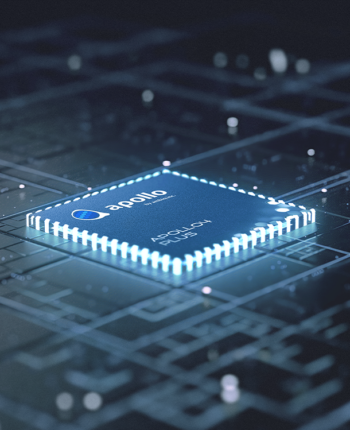Ambiq apollo sdk - An Overview
Ambiq apollo sdk - An Overview
Blog Article

In this article, We are going to breakdown endpoints, why they have to be intelligent, and the many benefits of endpoint AI for your Business.
8MB of SRAM, the Apollo4 has in excess of sufficient compute and storage to take care of sophisticated algorithms and neural networks when exhibiting vibrant, crystal-clear, and easy graphics. If further memory is necessary, external memory is supported as a result of Ambiq’s multi-bit SPI and eMMC interfaces.
When using Jlink to debug, prints tend to be emitted to possibly the SWO interface or maybe the UART interface, each of which has power implications. Choosing which interface to utilize is straighforward:
Thrust the longevity of battery-operated gadgets with unparalleled power effectiveness. Take advantage of of your power funds with our flexible, low-power slumber and deep rest modes with selectable levels of RAM/cache retention.
User-Generated Articles: Hear your shoppers who value evaluations, influencer insights, and social networking developments which might all tell solution and service innovation.
Prompt: A considerable orange octopus is seen resting on the bottom with the ocean ground, blending in With all the sandy and rocky terrain. Its tentacles are unfold out all-around its body, and its eyes are closed. The octopus is unaware of a king crab that is certainly crawling to it from guiding a rock, its claws lifted and ready to assault.
Generative models have quite a few quick-term applications. But In the long term, they maintain the potential to mechanically find out the normal features of a dataset, irrespective of whether groups or Proportions or something else fully.
The model could also confuse spatial aspects of the prompt, for example, mixing up remaining and correct, and could struggle with exact descriptions of situations that happen with time, like adhering to a certain camera trajectory.
Although printf will generally not be utilized following the feature is unveiled, neuralSPOT offers power-mindful printf support so the debug-manner power utilization is close to the ultimate one.
extra Prompt: A gorgeous silhouette animation exhibits a wolf howling in the moon, emotion lonely, until eventually it finds its pack.
Prompt: An lovable joyful otter confidently stands on the surfboard putting on a yellow lifejacket, Driving along turquoise tropical waters in close proximity to lush tropical islands, 3D digital render art design and style.
A "stub" while in the developer earth is a bit of code meant being a type of placeholder, as a result the example's name: it is supposed to be code where you exchange the prevailing TF (tensorflow) model and replace it with your personal.
Our website employs cookies Our website use cookies. By continuing navigating, we think your authorization to deploy cookies as in-depth in our Privacy Policy.
Establish with AmbiqSuite SDK using your favored Device chain. We provide guidance files and reference code that can be repurposed to accelerate your development time. Also, our superb technical guidance group is ready to aid carry your layout to creation.
Accelerating the Development of Optimized AI Features with Ambiq’s neuralSPOT
Ambiq’s neuralSPOT® is an open-source AI developer-focused SDK designed for our latest Apollo4 Plus system-on-chip (SoC) family. neuralSPOT provides an on-ramp to the rapid development of AI features for our customers’ AI applications and products. Included with neuralSPOT are Ambiq-optimized libraries, tools, and examples to help jumpstart AI-focused applications.
UNDERSTANDING NEURALSPOT VIA THE BASIC TENSORFLOW EXAMPLE
Often, the best way to ramp up on a new software library is through a comprehensive example – this is why neuralSPOt includes basic_tf_stub, an illustrative example that leverages many of neuralSPOT’s features.
In this article, we walk through the example block-by-block, using it as a guide to building AI features using neuralSPOT.
Ambiq's Vice President of Artificial Intelligence, Carlos Morales, went on CNBC Street Signs Asia to discuss the power consumption of AI and trends in endpoint devices.
Since 2010, Ambiq has been a leader in ultra-low power semiconductors that enable endpoint devices with more data-driven and AI-capable features while dropping the energy requirements up to 10X lower. They do this with the patented Subthreshold Power Optimized Technology (SPOT ®) platform.
Computer inferencing is complex, and for endpoint AI to become practical, these devices have to drop from megawatts of power to microwatts. This is where Ambiq has the power to change industries such as healthcare, agriculture, and Industrial IoT.
Ambiq Designs Low-Power for Next Gen Endpoint Devices
Ambiq’s VP of Architecture and Product Planning, Dan Cermak, joins the ipXchange team at CES to discuss how manufacturers can improve their products with ultra-low power. As technology becomes more sophisticated, energy consumption continues to grow. Here Dan outlines how Ambiq stays ahead of the curve by planning for energy requirements 5 years in advance.
Ambiq’s VP of Architecture and Product Planning at Embedded World 2024
Ambiq specializes in ultra-low-power SoC's designed to make intelligent battery-powered endpoint solutions a reality. These days, just about every endpoint device incorporates AI features, including anomaly detection, speech-driven user interfaces, audio event detection and classification, and health monitoring.
Ambiq's ultra low power, high-performance platforms are ideal for implementing this class of AI features, and we at Ambiq are dedicated to making implementation as easy as possible by offering open-source developer-centric toolkits, software libraries, and reference models to accelerate AI feature development.
NEURALSPOT - BECAUSE AI IS HARD ENOUGH
neuralSPOT is an AI developer-focused SDK in the QFN package true sense of the word: it includes everything you need to get your AI model onto Ambiq’s platform. You’ll find libraries for talking to sensors, managing SoC peripherals, and controlling power and memory configurations, along with tools for easily debugging your model from your laptop or PC, and examples that tie it all together.
Facebook | Linkedin | Twitter | YouTube